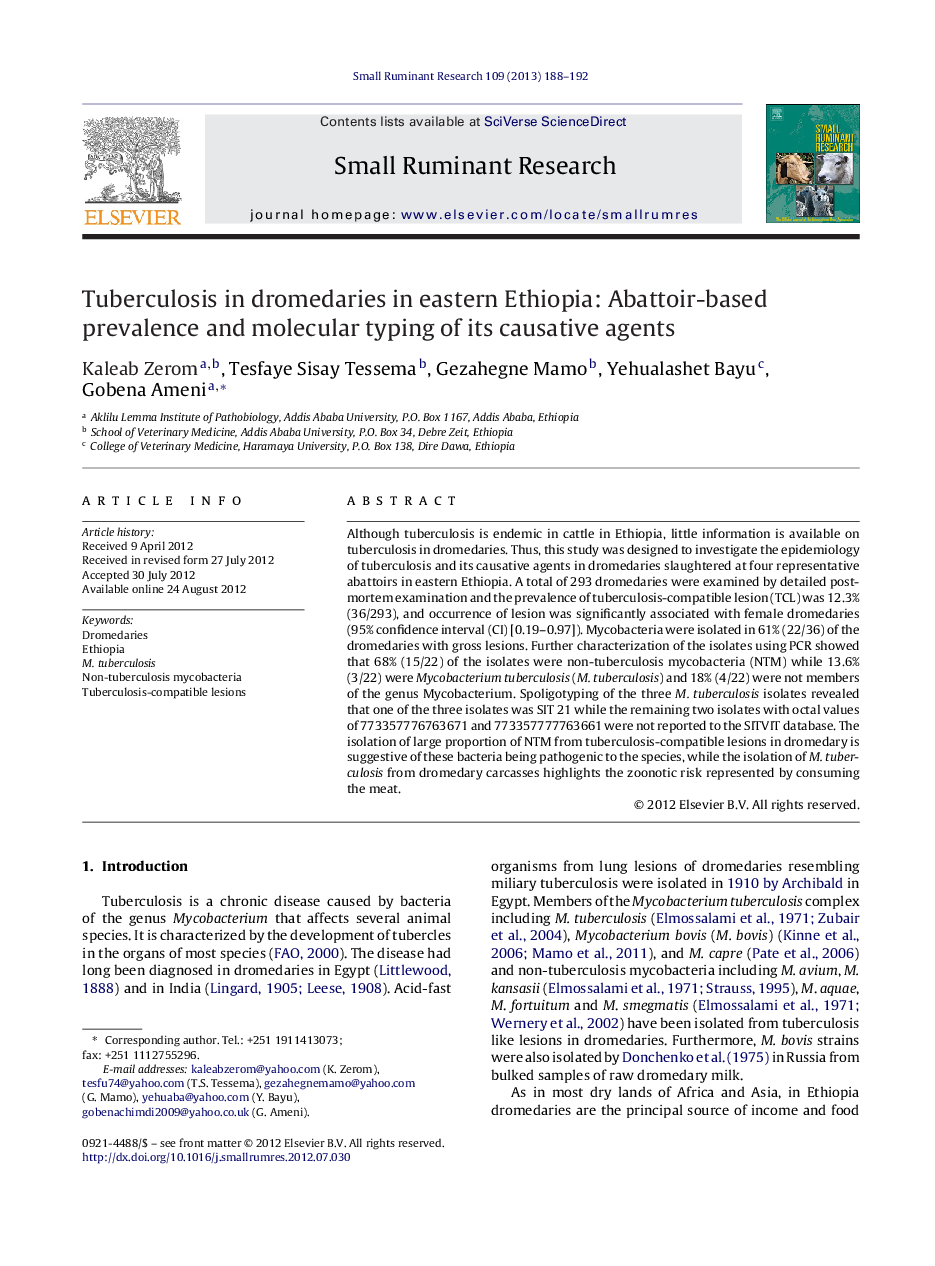| Article ID | Journal | Published Year | Pages | File Type |
|---|---|---|---|---|
| 5796093 | Small Ruminant Research | 2013 | 5 Pages |
Although tuberculosis is endemic in cattle in Ethiopia, little information is available on tuberculosis in dromedaries. Thus, this study was designed to investigate the epidemiology of tuberculosis and its causative agents in dromedaries slaughtered at four representative abattoirs in eastern Ethiopia. A total of 293 dromedaries were examined by detailed post-mortem examination and the prevalence of tuberculosis-compatible lesion (TCL) was 12.3% (36/293), and occurrence of lesion was significantly associated with female dromedaries (95% confidence interval (CI) [0.19-0.97]). Mycobacteria were isolated in 61% (22/36) of the dromedaries with gross lesions. Further characterization of the isolates using PCR showed that 68% (15/22) of the isolates were non-tuberculosis mycobacteria (NTM) while 13.6% (3/22) were Mycobacterium tuberculosis (M. tuberculosis) and 18% (4/22) were not members of the genus Mycobacterium. Spoligotyping of the three M. tuberculosis isolates revealed that one of the three isolates was SIT 21 while the remaining two isolates with octal values of 773357776763671 and 773357777763661 were not reported to the SITVIT database. The isolation of large proportion of NTM from tuberculosis-compatible lesions in dromedary is suggestive of these bacteria being pathogenic to the species, while the isolation of M. tuberculosis from dromedary carcasses highlights the zoonotic risk represented by consuming the meat.
